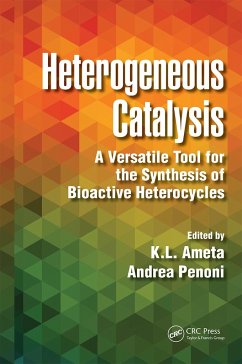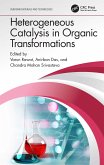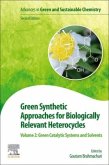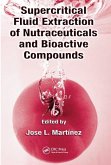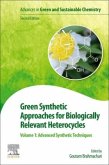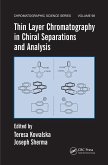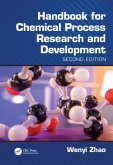For more than a century, bioactive heterocycles have formed one of the largest areas of research in organic chemistry. They are important from a biological and industrial point of view as well as to the understanding of life processes and efforts to improve the quality of life. Heterogeneous Catalysis: A Versatile Tool for the Synthesis of Bioactive Heterocycles highlights the recent methodologies used in the synthesis of such bioactive systems and focuses on the role of heterogeneous catalysis in the design and synthesis of various biologically active heterocyclic compounds of pharmacological interest.
Topics include:
Synthetic protocols for the construction of heterocyclic systems employing silica-bound catalysts
Recent advances in heterogeneous copper-catalyzed reactions for the synthesis of bioactive heterocycles
Features of silica-based heterogeneous catalysts, such as abundance, ease of use, and stability
Ultrasound as an effective tool for accelerating reactions
Organic transformations catalyzed by nano-ZnO as a valuable heterogeneous catalyst
Heterogeneous catalysts employed in the synthesis of coumarins
Heterocyclizations in the presence of silver salts
Home-made organometallic silica sources, known as silatranes
Reflecting the focused studies currently conducted in these areas, the book also examines anticancer, antifungal, antibacterial, anti-HIV, anti-inflammatory, antioxidant, and many more biological activities of heterocyclic compounds. It is essential reading for postgraduate and research scholars in the fields of biochemistry, chemical biology, medicinal chemistry and pharmaceutical chemistry.
Topics include:
Synthetic protocols for the construction of heterocyclic systems employing silica-bound catalysts
Recent advances in heterogeneous copper-catalyzed reactions for the synthesis of bioactive heterocycles
Features of silica-based heterogeneous catalysts, such as abundance, ease of use, and stability
Ultrasound as an effective tool for accelerating reactions
Organic transformations catalyzed by nano-ZnO as a valuable heterogeneous catalyst
Heterogeneous catalysts employed in the synthesis of coumarins
Heterocyclizations in the presence of silver salts
Home-made organometallic silica sources, known as silatranes
Reflecting the focused studies currently conducted in these areas, the book also examines anticancer, antifungal, antibacterial, anti-HIV, anti-inflammatory, antioxidant, and many more biological activities of heterocyclic compounds. It is essential reading for postgraduate and research scholars in the fields of biochemistry, chemical biology, medicinal chemistry and pharmaceutical chemistry.

